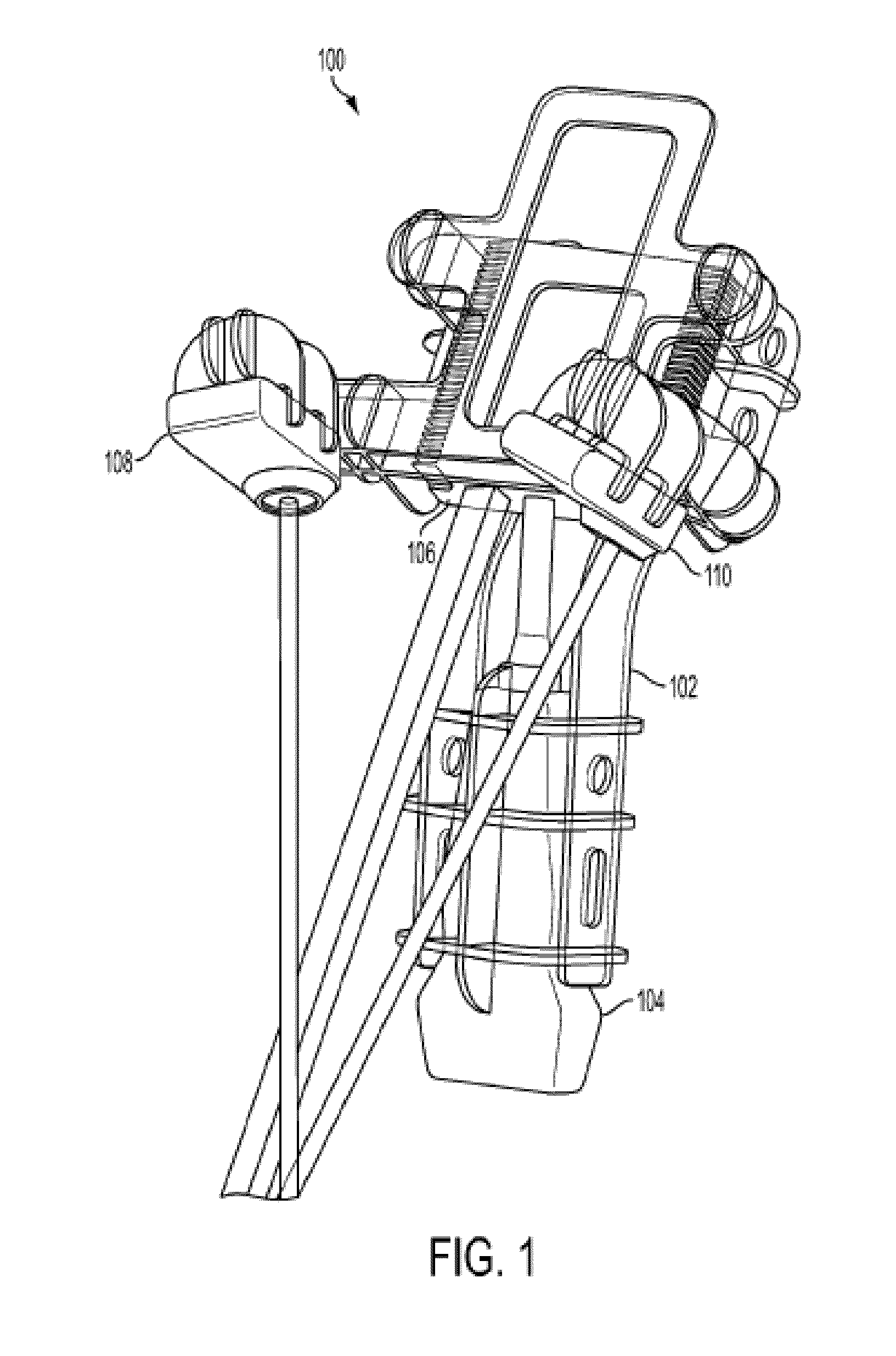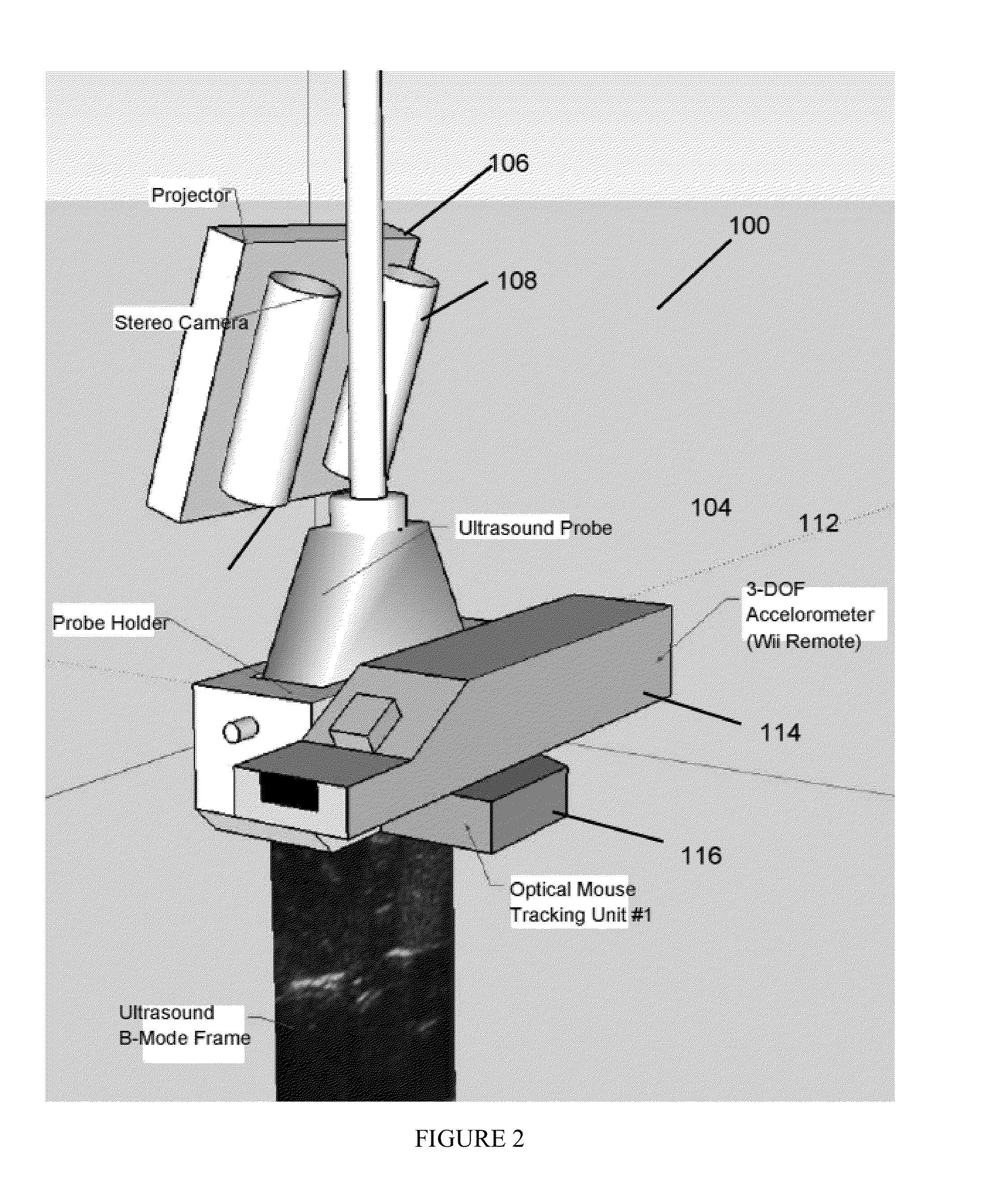Interventional In-Situ Image-Guidance by Fusing Ultrasound and Video
a multi-modality fusion and ultrasound technology, applied in the field of imaging devices and augmentation devices, can solve the problems of insufficient navigation accuracy, inconvenient use, and inability to natively assist multi-modality fusion, and achieve the effect of improving alignment performance and improving alignment performance for users
- Summary
- Abstract
- Description
- Claims
- Application Information
AI Technical Summary
Benefits of technology
Problems solved by technology
Method used
Image
Examples
example 1
Ultrasound-Guided Liver Ablation Therapy
[0270]Recent evidence suggests thermal ablation in some cases can achieve results comparable to that of resection. Specifically, a recent randomized clinical trial comparing resection to RFA for small HCC found equivalent long-term outcomes with lower morbidity in the ablation arm [Chen-2006] Importantly, most studies suggest that efficacy of RFA is highly dependent on the experience and diligence of the treating physician, often associated with a steep learning curve [Poon-2004]. Moreover, the apparent efficacy of open operative RFA over a percutaneous approach reported by some studies suggest that difficulty with targeting and imaging may be contributing factors [Mulier-2005]. Studies of the failure patterns following RFA similarly suggest that limitations in real-time imaging, targeting, monitoring of ablative therapy are likely contributing to increased risk of local recurrence [Mulier-2005].
[0271]One of the most useful features of ablativ...
example 2
Monitoring Neo-Adjuvant Chemotherapy Using Advanced Ultrasound Imaging
[0294]Out of more than two hundred thousand women diagnosed with breast cancer every year, about 10% will present with locally advanced disease [Valero-1996]. Primary chemotherapy (a.k.a. Neo-adjuvant chemotherapy, NAC) is quickly replacing adjuvant (post-operative) chemotherapy as the standard in the management of these patients. In addition, NAC is often administered to women with operable stage II or III breast cancer [Kaufmann-2006]. The benefit of NAC is two fold. First, NAC has the ability to increase the rate of breast conserving therapy. Studies have shown that more than fifty percent of women, who would otherwise be candidates for mastectomy only, become eligible for breast conserving therapy because of NAC induced tumor shrinkage [Hortabagyi-1988, Bonadonna-1998]. Second, NAC allows in vivo chemo-sensitivity assessment. The ability to detect early drug resistance will prompt change from the ineffective t...
example 3
Ultrasound Imaging Guidance for Laparoscopic Partial Nephrectomy
[0313]Kidney cancer is the most lethal of all genitourinary tumors, resulting in greater than 13,000 deaths in 2008 out of 55,000 new cases diagnosed [61]. Further, the rate at which kidney cancer is diagnosed is increasing [1,2,62]. “Small” localized tumors currently represent approximately 66% of new diagnoses of renal cell carcinoma [63].
[0314]Surgery remains the current gold standard for treatment of localized kidney tumors, although alternative therapeutic approaches including active surveillance and emerging ablative technologies [5] exist. Five year cancer-specific survival for small renal tumors treated surgically is greater than 95% [3,4]. Surgical treatments include simple nephrectomy (removal of the kidney), radical nephrectomy (removal of the kidney, adrenal gland, and some surrounding tissue) and partial nephrectomy (removal of the tumor and a small margin of surrounding tissue, but leaving the rest of the ...
PUM
 Login to View More
Login to View More Abstract
Description
Claims
Application Information
 Login to View More
Login to View More - R&D
- Intellectual Property
- Life Sciences
- Materials
- Tech Scout
- Unparalleled Data Quality
- Higher Quality Content
- 60% Fewer Hallucinations
Browse by: Latest US Patents, China's latest patents, Technical Efficacy Thesaurus, Application Domain, Technology Topic, Popular Technical Reports.
© 2025 PatSnap. All rights reserved.Legal|Privacy policy|Modern Slavery Act Transparency Statement|Sitemap|About US| Contact US: help@patsnap.com



